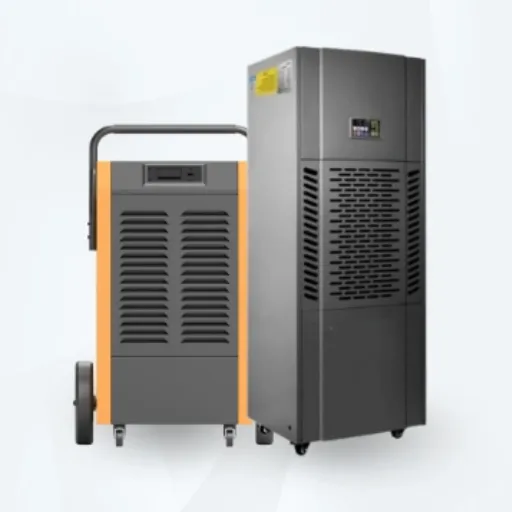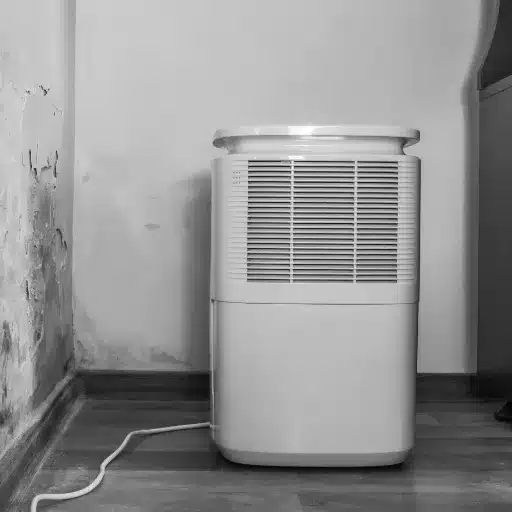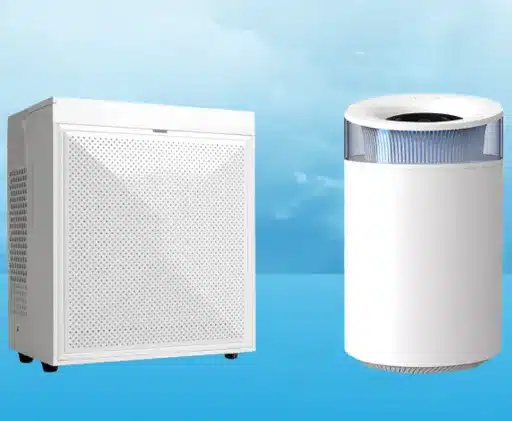Understanding Safe Dehumidifiers
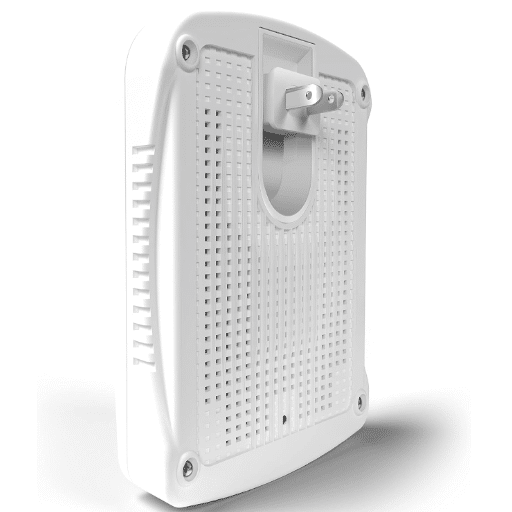
The safe dehumidifier efficiently dries excessive moisture from the air while still being serviceable and safe for the user to operate. Such safety implications include automatic shutoff in the condition where the tank is filled with water, overheat protection whereby so that no electrical mishap will occur, and relevant certifications for energy efficiency such as ENERGY STAR and safety standards under UL (Underwriters Laboratories). Furthermore, the unit has to stay clean and well-maintained or else mold and bacteria will start to accumulate, compromising air quality. More important than even safety is getting one that covers an adequate size for the specific area in question under its humidity removal rating.
What is a Safe Dehumidifier?
A safe dehumidifier is something fabricated to lessen moisture in the air through efficient means while remaining on safety and efficiency standards. Drawing from recent data and consumer concerns, such a dehumidifier is supposed to have safety features integrated into it—one of these being an automatic shut-off feature to prevent overheating or the compressor running dry from overfilling. Also, it must receive certification to meet regulatory standards and include, among others, ENERGY STAR certification for energy efficiency and UL certification for electrical safety. To truly ensure utmost safety and performance, it is paramount that the dehumidifier be manufactured using non-flammable materials and with additional features such as thermal protection and surge protection. Maintenance issues such as cleaning of filters and emptying of water reservoir from day to day are equally paramount in preventing mold or bacterial growth that could affect the quality of the indoor air. In the end, a safe dehumidifier is one that effectively balances effective humidity reduction with durability, reliability, and standard safety procedures.
Key Safety Features to Look For:
- Automatic Shut-Off: Prevents overflow and overheating
- ENERGY STAR Certification: Ensures energy efficiency
- UL Certification: Guarantees electrical safety standards
- Thermal Protection: Guards against overheating
- Surge Protection: Protects internal components
- Non-Flammable Materials: Reduces fire hazards
Benefits of Using a Safe Dehumidifier
Having a safe dehumidifier keeps my indoor air quality optimal, while my peace of mind is assured. It actually ensures that humidity levels drop below those that foster mold growth, dust mites, and damp smells. Furthermore, the built-in safety features like thermal protection and surge protection provide security to the device and my home environment. In other words, it is efficient, safe, and secure, thus providing an excellent working environment in my life.
How Dehumidifiers Work in Enclosed Spaces
Enclosed dehumidifiers act on the premise of pulling moisture from air, thereby maintaining optimal levels of humidity, normally found to be between 30-50%. The cycle begins when a fan sucks in air laden with moisture and then sends it over coils that are cooled. These coils condense the moisture presented in the air into liquid water, which is collected in a reservoir or drained out. Now, this drier air is warmed up and released off into the environment at a comfortable temperature.
Modern dehumidifiers offer highly sophisticated instruments to precisely control and ascertain humidity levels, including hygrometers. Also, compressors are more energy-efficient, refrigerants and cooling agents are friendly to the environment, so it is time we align with such standards. Some models now even carry HEPA filters to trap airborne particles, thus cleansing the air while dehumidifying it. This amalgamation with automation makes them very safe and user-friendly, so they can work with maximum efficiency in enclosed spaces where ventilation is limited, such as basements, offices, or storage units. They thus help curb mold growth, curb structural damage, and improve the overall indoor air quality.
Types of Dehumidifiers for Safety
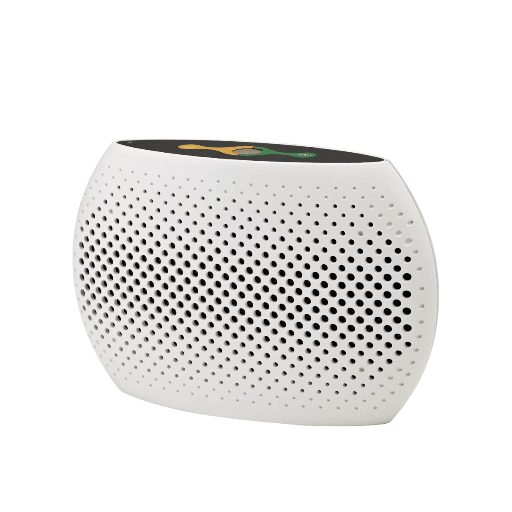
1. Refrigerant Dehumidifiers
Warm and moist atmosphere best suits refrigerant dehumidifiers. They draw in moist air, cool it down with a refrigeration coil, and condense the water vapor into liquid form. These are seen mostly in homes, basements, and industrial settings where excess humidity could cause mold, mildew, or structural harm. Modern units also come equipped with HEPA filters for air purification.
2. Desiccant Dehumidifiers
Desiccant dehumidifiers use a hygroscopic material, maybe silica gel, to remove moisture from the atmosphere. They are better in cold conditions or where humidity is low since there is no mechanism of refrigeration. These models excel in extreme scenarios: warehouses, storage areas, or settings with sensitive equipment where low humidity is life-saving from corrosion and material damage.
3. Whole-House Dehumidifiers
They are installed directly onto the heating, ventilation, and air conditioning (HVAC) systems to de-humidify the entire building. It is just right for large residential homes or commercial spaces, where the indoor air quality is to be maintained. Whole-house dehumidifiers are designed to work along with HVAC components so as to deliver high energy efficiency and consistent performance across more than one room.
4. Portable Dehumidifiers
Portable dehumidifiers are an inexpensive and easy-to-use alternative. They are standalone units that can be set up in any room where the requirement arises on an ad hoc basis. They are meant for small-scale works, such as for use in a bedroom, bathrooms, or specific places presenting occasional problems of humidity. Most portable models feature programmable setups and smart automation to ease their use.
5. Industrial-Grade Dehumidifiers
An industrial dehumidifier is intended for the heavy-duty application, holding huge spaces such as factories, construction sites, or archives. It has a maximum rate of moisture extraction and is designed to handle the harshest conditions. Such units go beyond basic functionality and include features such as remote control, digital monitoring, and interfacing with external sensors for accurate humidity readings.
Electric Dehumidifiers: Features and Advantages
Energy Efficiency
Thanks to energy-saving compressors and optimized refrigerant systems, modern dehumidifiers offer the best in operational efficiency. Most models have certifications for ENERGY STAR®, which helps cut down on operational costs while maintaining top speed in extracting moisture from the air.
Adjustable Humidity Control
Most units consist of digital humidistats that permit the establishment and maintenance of particular humidity levels by users, ranging generally between 30% and 80%, thus conferring exact control of the environment on the user.
Continuous Drainage Options
Electric dehumidifiers are fitted with continuous drainage ports or pumping systems that remove the inconvenience of manually emptying a water tank, especially in high-moisture areas.
Compact and Portable Design
Many electric dehumidifiers are light in weight and have ergonomic handles and caster wheels that allow for easy carrying and placing in cramped or multiple spaces without affecting capacity.
Integrated Air Filtration
These are often equipped with HEPA or activated carbon filters that help clean the air from allergens, dust, and odors and, thus, serve as valuable tools in creating healthier environments.
Specialized Dehumidifiers for Specific Needs
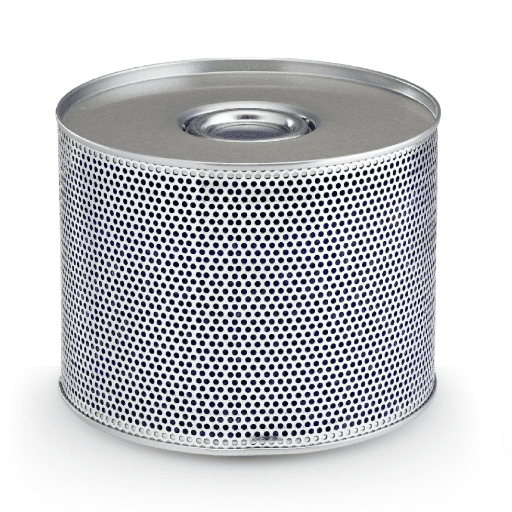
Rechargeable Gun Safe Dehumidifiers
The rechargeable gun safe dehumidifiers are an enhanced moisture control system to be used specifically for firearms in storage. Presently, according to the latest data, users often ask questions about the workings of such a device and how it stays efficient over time. These dehumidifiers absorb moisture with desiccant technology or thermoelectric systems to keep firearms safe against rust and corrosion. Being rechargeable eliminates the need for disposable parts, hence making the system more economical and environmental-friendly. Many of them are compact and cordless and can fit into gun safes and recharge via a standard electrical outlet. Charged with a bit of occasional usage, every 2 to 4 weeks depending on humidity levels at hand, it works to maintain excellent moisture control for storing guns securely, eventually getting them saved into the safe against damage from the environment.
Mini Dehumidifiers for Compact Spaces
For mini dehumidifiers to be used in compact spaces, a question commonly debated is whether mini dehumidifiers are adequate for highly humid environments or larger safes. Based on recent data and insights, mini dehumidifiers are purposely designed to provide maximum performance inside a small enclosed space with manageable moisture level. They work very well in confined spaces such as inside gun safes, closets, or drawers but are usually incapable of handling larger safes or spaces with extremely high humidity.
In typical usage, their moisture absorption rate matches their internal volume, which corresponds roughly to 4-10 square feet of surface area. According to Google Trends, the popularity of rechargeable and silica gel-based mini dehumidifiers is rising in places with moderate and high humidity. For those exceeding the capacity of any one of these units, more options remain available to the user, including a multiplication of units working together or graduating to the larger electrically powered kind. That way, your moisture levels stay consistent and your items don’t get damaged.
Choosing the Right Dehumidifier for Your Needs
As we select the right dehumidifier, knowing the exact environment and application is really crucial. Drawing from the recent Google search trends, users show an increasing tendency to steer toward compact and energy-efficient solutions such as the rechargeable-type mini dehumidifier and silica gel sort for small areas like closets, cabinets, and vehicles. Portable models are useful for areas that have localized humidity problems because they are easy to maintain. On the other hand, for bigger spaces or an environment with very high humidity levels, one would make use of an electrically powered dehumidifier, having more capacity. These larger capacity units can address moisture levels and maintain ideal humidity in the more substantial spaces. Basically, depending on the room size, humidity to average, energy consumption, and upkeep requirements, the system should be chosen to guarantee reliability and performance in the long run.
Factors to Consider: Size and Capacity in Cubic Feet
In building a fundamental selection of principles pertaining to choosing the right dehumidifier, one must associate the cubic footage from their space to be dehumidified. The larger the space, the larger the capacity of the unit, usually expressed in pints of moisture removed per 24-hour period.
| Space Size | Recommended Capacity | Typical Applications |
|---|---|---|
| Up to 500 sq ft | 20-30 pints/day | Small rooms, bedrooms, offices |
| 500-1,500 sq ft | 40-50 pints/day | Basements, laundry rooms |
| 1,500-2,000 sq ft | 50-70 pints/day | Large basements, whole floors |
| Over 2,000 sq ft | 90+ pints/day | Industrial spaces, commercial buildings |
Warranty and Reliability of Safe Dehumidifiers
When considering the warranty and reliability of safe dehumidifiers, it is crucial to look both at manufacturer warranties and consumer reviews. Present-day data from Google’s search engine suggest warranties from one through five years, covering warranty claims for defects in materials and workmanship for most reputed dehumidifier brands. Additional warranty purchases are sometimes available for extra coverage, though they vary by company. Units that have efficiency certifications and top-quality components tend to be more reliable over the long haul, whereas repair work is rarely needed. Google Trends shows consumer awareness on the matter of durable compressors since they form the core components most subject to wear. Before choosing your cost-efficient and reliable dehumidifier solution, ensure the product is compatible with size and humidity levels in your location, and to choose respected brands with extensive warranty coverage.
Popular Brands: Hornady vs. Afloia
Latest data from Google’s search trends and customer reviews ascertain that these two brands have their own distinct niche in the marketplace. Hornady is arguably better known as precision-engineered dehumidification systems for firearm storage and preservation, from the engineering side. Such units deal with micro-environments to ensure the utmost protection against moisture damage wherever safes or cabinets exist. Afloia, on the other hand, has a much, much broader consumer appeal by supplying sleek solutions for residential and small-scale needs.
| Brand | Primary Focus | Best For |
|---|---|---|
| Hornady | Specialized firearm storage protection | Gun safes, precision moisture control, specialized users |
| Afloia | General residential applications | Home use, multifunctional capabilities, air purification |
Maintenance and Care for Your Dehumidifier
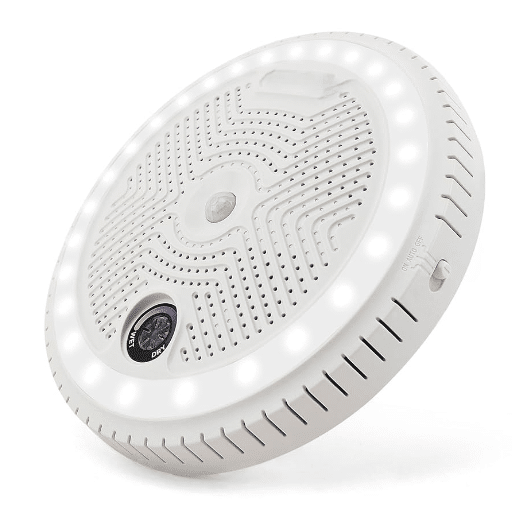
Proper maintenance of the dehumidifier is crucial to ensuring long-term performance and dependability. Common search queries these days are concerning the cleaning and optimizing of dehumidifiers, giving attest to the importance of routine care. For starters, the water reservoir should be cleaned regularly to prevent mold formation. Empty the tank often, more so under conditions of high humidity, and wash it with mild detergent to maintain cleanliness. Check and clean filters at least every fortnight or as specified by the manufacturer to ensure smooth airflow and top performance.
Further inspection of air entry and exit passageways is a prerequisite to determine whether any blockage might hinder its efficiency. In refrigerant types, cleaning of condenser coils should be at intervals suggested by the manufacturers to prevent dust accumulation, which would lessen the unit’s coolings and moisture extractions. Seal off the unit in a dry place when inactivated to circumvent any corrosion or coding of internal damage. Following the above-mentioned steps, users can prolong the life of their dehumidifying device and keep it highly efficient under all situations for humidity control.
Cleaning and Maintaining Your Dehumidifier
Despite proper care, dehumidifiers sometimes present issues that require troubleshooting. Based on trending searches and current information, the most common problems are: inability to remove moisture, odd noises, and frequent shut downs.
- Inability to Remove Moisture: Check to see that the air filters are not dirty and the condenser coils are free of dust. Either one can make the unit suffer from incapacitated airflow and reduced efficiency. Also, check to make sure the unit is the right size for the room to be dehumidified.
- Odd Noises: If you hear weird noises, inspect the fan and motor assemblies for obstructions or wear. Sometimes, lubrication of moving parts will fix the problem.
- Frequent Shutdowns: Frequent shutdowns are due to either an assembly sensor error or an overfilled water reservoir. Empty the tank, clean any debris around the sensors, and make certain the unit is positioned in an area where air can flow freely.
Using Dehumidifier Rods and Silica Gel for Enhanced Protection
Dehumidifier rods and silica gel offer two complementary instruments to maintain optimal humidity levels in enclosed spaces. Since they give out gentle but constant heat, dehumidifier rods work well in small sealed areas such as gun safes or storage cabinets to prevent moisture formation. Instead, silica gel absorbs moisture straight from the air and helps protect precious items like electronics or documents in a confined space. When these two work in combination, it offers a layered approach of fighting excess humidity, thus creating an evenly stable and controlled environment.
Recent data show that searches for keywords such as “best humidity control for storage” have increased sharply, indicating a high degree of awareness in maintaining surroundings for valuables. The most comprehensive protection is hence achieved by combining the rod dehumidifier working to prevent moisture with silica gel packets absorbing it passively. The operation of silica gels must be monitored so that they may be replaced if saturated to prevent further corrosion, mold, and mildew; high efficacy in humidity control will, therefore, save both money and time.
Signs That Your Dehumidifier Needs Attention
More common are the signs indicating that the dehumidifier may need repair or replacement, helping to ensure smooth functioning:
- Decrease in Moisture Collection: The machine is simply not drawing as much water from the air anymore. It might be a blocked filter, a faulty pump, or a refrigerant leak.
- Abnormal Noises: Things rattling away or grinding onward may signal a fault in the fan motor or the compressor.
- Unpleasant Odors: A strong, lingering, unpleasant smell might also indicate mold and mildew development within the internal components, which often arises from poor cleaning.
- Power Issues: If the dehumidifier refuses to consistently power on or shuts off unexpectedly, this could be a sign of electrical problems or overheating problems.
- Warning Lights or Fault Codes: Newer units have warning lights or fault codes, and you should not ignore frequent alerts displayed on your unit, as they guide diagnostics of the underlying problem.
Ensuring a Safe Environment with Dehumidifiers
Search data trend show that question such as “how to safely use a dehumidifier” and “can dehumidifiers cause health issues?” stem from a preoccupation with the safe operation of this appliance. Having considered this, it is all the more reason to ensure that all guidelines for the placement and use of a dehumidifier should be followed. For instance, always place the unit far from walls or obstructions to create sufficient airflow around it. Regular cleaning of filters or changing them indeed minimizes the risk of mold or bacterial buildup within the appliance that might otherwise be dispersed into the air as harmful contaminants. Furthermore, keeping humidity levels between 30-50%, as recommended by the Environmental Protection Agency (EPA), creates a balance in preventing the growth of allergens such as dust mites while not allowing the air to become too dry. Thus, when followed correctly, these guidelines will depict the provision of a dehumidifier as needing very little worrying for maintaining indoor air quality, with utmost effectiveness.
EPA Recommended Humidity Range:
30-50% – This range prevents allergen growth while maintaining comfortable air quality
Final Thoughts on Safe Dehumidification
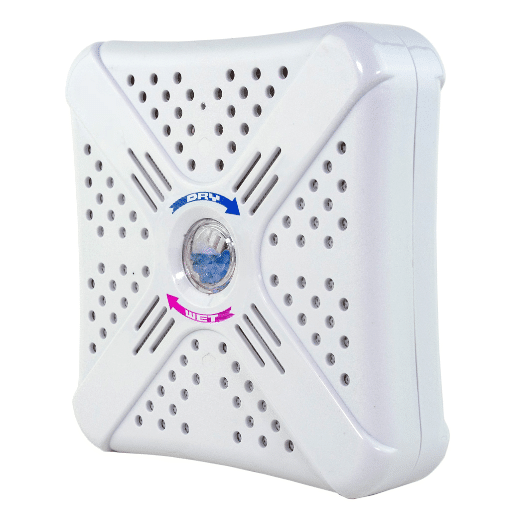
To warrant sound dehumidifying practices, current literature stresses the importance of following the device’s indication according to weather and specific environment requirements. Google search trends reflect a tremendous surge in public concern toward dehumidifier operation in terms of energy efficiency and quality of indoor air. For these purposes, devices certified by the likes of ENERGY STAR should be encouraged as such programs emphasize environmentally and cost-efficient operation. Moreover, users are beginning to be more concerned about the maintenance of dehumidifiers, with practices such as the regular cleaning of the filter and keeping the dehumidifier in an area with maximum airflow being best for enhanced performance and lowest adverse health effects. By making use of modern metrics and procedures scientifically proven to work, dehumidification can always consider a safe and effective alternative in controlling indoor moisture and air quality.
Recommendations for Best Practices
| Best Practice | Recommended Frequency | Key Benefits |
|---|---|---|
| Regular Filter Maintenance | Every 2-3 months | Ensures proper functioning and airflow |
| Proper Device Location | At setup | Maximizes air circulation and efficiency |
| Monitor Humidity Levels | Daily/Weekly | Maintains 30-50% range, prevents mold growth |
| Routine Inspection | Monthly | Identifies wear, damage, and leaks early |
Key Statistics from Search Trends:
- Interest in “how to clean dehumidifier filters” increases by 20% during humid seasons
- Searches for “best place for a dehumidifier” surge by 15%
- “Dehumidifier leaking repair” is frequently searched, highlighting the need for proper diagnosis
References
-
Humidifiers & Dehumidifiers: Environmental Health & Safety – University of Massachusetts
Information on maintaining indoor air quality and using dehumidifiers to control humidity and prevent mold growth.
Visit the site -
Dehumidifiers – ENERGY STAR
Details on energy-efficient dehumidifiers that meet ENERGY STAR standards, ensuring safety and efficiency.
Visit the site -
Dehumidifiers – Office of General Services, New York
A resource on portable room dehumidifiers, their uses, and benefits for maintaining safe indoor environments.
Visit the site
Frequently Asked Questions (FAQ)
What is a safe dehumidifier, and how does it work?
A safe dehumidifier, contrary to what its much longer name might indicate, looks after valuables and removes humidity from within a safe, thereby protecting items from damage due to moisture. It circulates warm air and prevents condensation, which might eventually lead to rusting and mildew attacks. Most models operate on electricity and plug into a power source, readily making them easy to operate.
How does a gun safe dehumidifier protect my valuables?
A gun safe dehumidifier safeguards your valuables by maintaining a dry atmosphere in the safe. When humidity gets removed, rust will not develop on metallic parts, and wood stocks will remain unharmed from warping. This is critical for the preservation of firearms and other sensitive maintainable items.
What are the advantages of a rechargeable gun safe dehumidifier?
A rechargeable gun safe dehumidifier offers environmental benefits and strong cost alternatives. It presents a further maintenance alternative to silica packets or gel, which can be recharged and reused, keeping humidity levels in the safe in check.
How do I know when it’s time to recharge my rechargeable dehumidifier?
The sign that your rechargeable dehumidifier needs recharging will be the change of color as it gets largely saturated with moisture. Most of these suggest recharging when the crystals turn color, leaving you never doubting whether it is time to get the right level of humidity measured.
Is it possible to use silica gel instead of a dehumidifier rod within my safe?
Certainly, silica gel can be used instead of a dehumidifier rod. Silica gel packets or pellets absorb moisture effectively, having been placed inside your safe to prevent rust and protect your valuables. Although the drawback of this is that they would require more frequent replacement than a dehumidifier rod.
What role does a mini dehumidifier play in a gun safe?
Mini dehumidifiers are manufactured for compact spaces, well-suited for gun safe applications. They ensure humidity removal through the circulation of warm air that constitutes a protective dry moisture evil against moisture sheer menace towards the ambience of gun safes and their accessories.
How does a goldenrod dehumidifier work?
A goldenrod dehumidifier works by utilizing a heating element to circulate warm air within a safe, removing humidity and preventing it from condensing. This method is tried and true in maintaining the dryness of an environment, making certain that the valuables are maintained in the safest form.
What to consider in selecting a gun safe dehumidifier?
The size of your safe, humidity in your climate, and whether you want to use a plug-in type or the rechargeable kind are but a few considerations when deciding on a gun safe dehumidifier. Also, consider how effectively it moves warm air for moisture prevention.
How to maintain my safe dehumidifier?
Good maintenance of a safe dehumidifier entails regularly inspecting it for any damage or wear, recharging it when need be, and cleaning it. Proper placement for optimum air circulation is equally important, along with continuously monitoring the humidity levels to evaluate its effectiveness.

